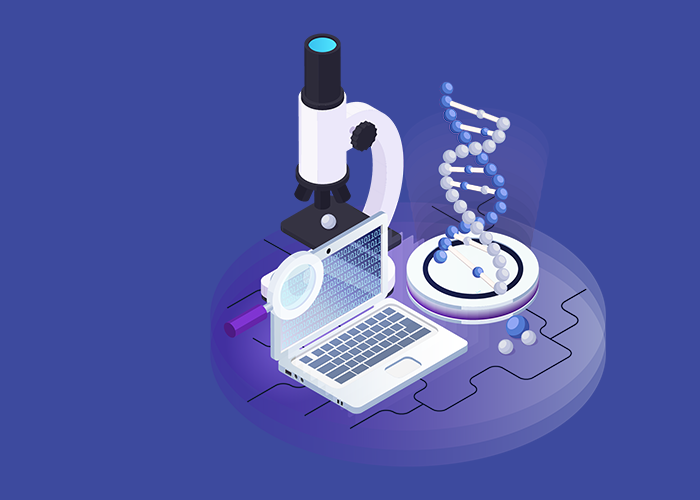How is AI assisting the world during the COVID 19 Pandemic?

INTRODUCTION
Artificial Intelligence has been very successful in various industries like fraud detection for the finance industry, smart sensors camera for the defense industry, and automotive driving, etc and has also been widely used in the medical industry assisting with drug discovery, smart patient monitoring system, and disease diagnosis.
Given the current pandemic due to the outbreak of the COVID-19 virus, AI has been constantly supporting clinical trials to curb the outbreak of the virus. For instance, we have smart robots that deliver medicines and food to the infected patients admitted in the hospital, constantly monitor temperature and oxygen levels alerting the doctors in case of any suspicious changes, and even been helping the development of the vaccine for the virus.
Applications of AI in the Detection and Diagnosis of COVID-19 Pandemic
Detection And Diagnosis
Artificial Intelligence can analyze any Covid-19 related symptoms in the patients and alert the healthcare authorities, this is both efficient and quick and helps the doctors in better decision making for further treatment. The AI algorithms have actively helped in the diagnosis of the infected coronavirus cases with the help of medical imaging technologies like Computed tomography and Magnetic resonance imaging scans of the human body parts.
Smart Monitoring
Artificial Intelligence is used for smart monitoring and prediction on the spread of the COVID-19 virus. A deep neural network is developed to assist the medical frontline in monitoring the treatment of the affected individuals. AI has the capability of providing and monitoring every update of the patients admitted diagnosed with the COVID-19 pandemic. And even provide suggested solutions to treat the virus for keeping the symptoms of that particular patient in mind.
Tracing The Infection
Artificial intelligence can assist in analyzing the intensity of infection by this virus identification of the clusters and hot spots and can successfully trace the individuals and also monitor them. It can also predict the future courses of the disease and its likely reappearance.
Projection of cases and mortality
AI can track and predict the nature of the virus from the data which is available. Further, it can also predict and calculate the number of COVID-19 positive cases and deaths in any region. AI can help to identify the most endangered regions, infected people, and countries and to take the right measures accordingly.
Applications of AI in the Treatment of COVID-19
Tracking the pandemic
Detection of COVID‐19 with AI was done initially with BlueDot, a Canadian-based company. The BlueDot company not only detected the spread of the virus but also predicted the calculated spread of the disease. UNESCO in collaboration with the International Research Centre for Artificial Intelligence launched a “coronavirus watch” program that provides live updates related to COVID‐19.
Pandemic control and detection of cases
AI has been actively used in various countries for checking body temperature using AI-enabled infrared-sensitive cameras. Tracking cases with facial recognition systems, and also smartphones tracking the GPS location of an infected person through their smartphones is also underway.
Assisting health care system
The X‐rays and computed scans of the COVID‐19 patients are being used to train the neural networks to help in the diagnosis of COVID‐19 disease. AI is being used to identify severely ill patients as well as predict their prognosis. AI is helping distinguish between COVID‐19 infections and community‐acquired pulmonary infections. AI‐based robots are assisting the frontline health care professionals to maintain a safe distance from the infected patients by conducting temperature screenings of the patients and distributing medication. Besides, these robots have been actively used to disinfect public places and hospital premises thoroughly.
Vaccine and drug development
AI is playing a vital role in the prediction of the RNA structure of SARS‐CoV‐2, which would help the researchers in understanding the nature and intensity of the virus. On similar grounds, researchers are also exploring the AI system for the development of COVID-19 vaccines, in various regions in identifying the structure of antibody targets and cell presentation that can be recognized and used for the development of vaccines.
AI and Pandemic Prediction
Multiple data intelligence techniques and methods have been applied to ascertain the nature and complexity of the coronavirus disease and predict the best possible health outcomes for the patients.
Research performed with the help of Artificial Intelligence on the available data from the world health organization in 2020, showed that the acceleration of transmission of COVID-19 has been associated with different forms of air pollution. Cities that had more than 100 days of air pollution have had a higher average of infected individuals compared to cities that have less than 100 days.
Many cases of prediction have been developed using artificial neural network curve fitting techniques, by using public World Health Organization data, alongside the researchers with the help of AI were also able to predict future trends in infection. These forecasting methods helped provide an intelligent model with some simple calculations combining the data of different countries.
CONCLUSION
With the help of advanced technologies, companies can predict a future pandemic, not only through the use of current models and data but through different but also unstructured sources of datasets provided by the healthcare resources as well as indirect sources such as social media, weather, pollution and GPS clusters.
Given the current situation, coronavirus disease has set a new benchmark for the companies dealing with data analytics, which would make their prediction and precision capabilities more accurate in the future.
